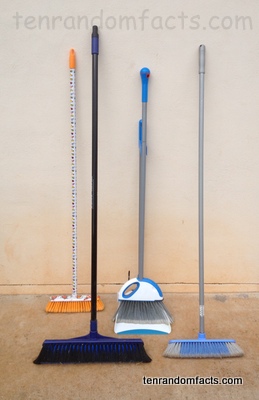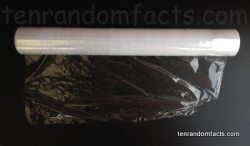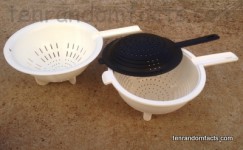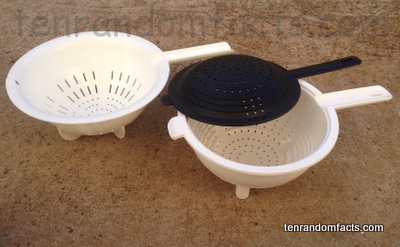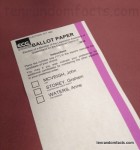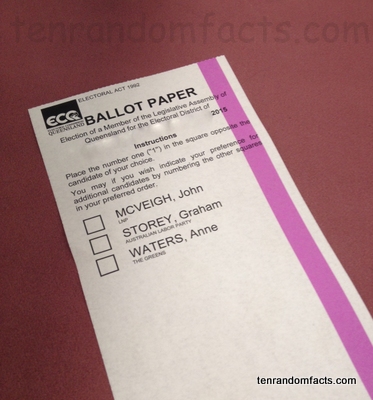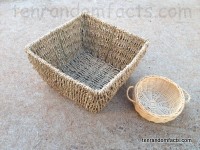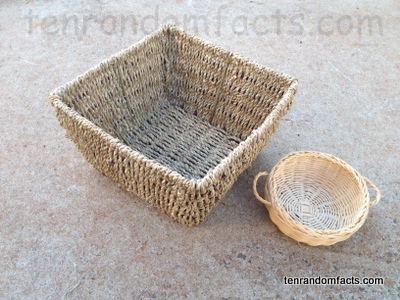
Sweep the broom here and there.
- Brooms are inventions typically used on a floor to sweep messes, dust and dirt into a pile for disposal.
- Brooms usually consist of a brush, used to sweep; and a stick handle, that is generally long and cylindrical.
- The bristles in the brush of a broom are typically made of plastic, straw, animal hair or other plant fibres.
- In the early 1900s, the number of factories in the United States that manufactured brooms reached over 1000, although later, this number dropped by at least two thirds.
- Brooms created before the 1800s were generally made by people at home, and were often impractical bundles of branches, grass and other fragile objects that collapsed under a few uses; however they became more sturdy during the 19th century due to improvements in construction, and machinery built for the purpose.
- Witches are commonly associated with ‘besom’ style brooms, that have a long handle protruding from the centre of a bundle of bristles, as they are said to ride on them for transport purposes.
- Levi Dickenson, a Massachusetts’ farmer in the United States, is credited with inventing a broom in 1797, that used fibres that functioned significantly better than others, and it quickly became a popular fibre for the tool.
- The material that Levi Dickenson used in his broom was a species of sorghum, Sorghum vulgare, that became known as ‘broom corn’, and it became one of the most common fibres used for making the tool in the 1800s, and the plant is still used for this purpose today.
- A broom is generally used by holding the handle and using a sweeping or dusting motion, while those with a handle at a slight angle to the broader, but shorter, bristled brush, allows the tool to pull or push dirt along the floor.
- Brooms are commonly used in a metaphorical sense in poetic literature, and are often used symbolically for other purposes.



